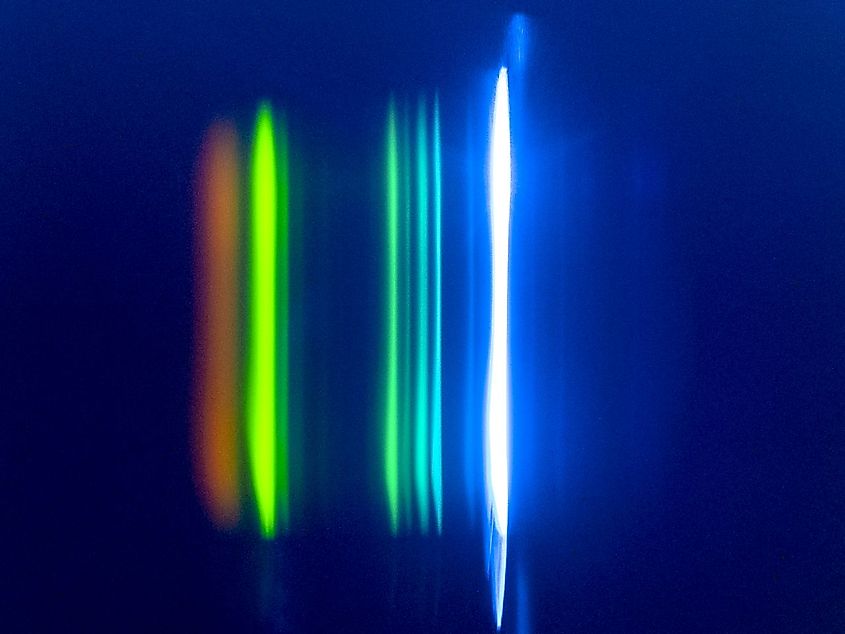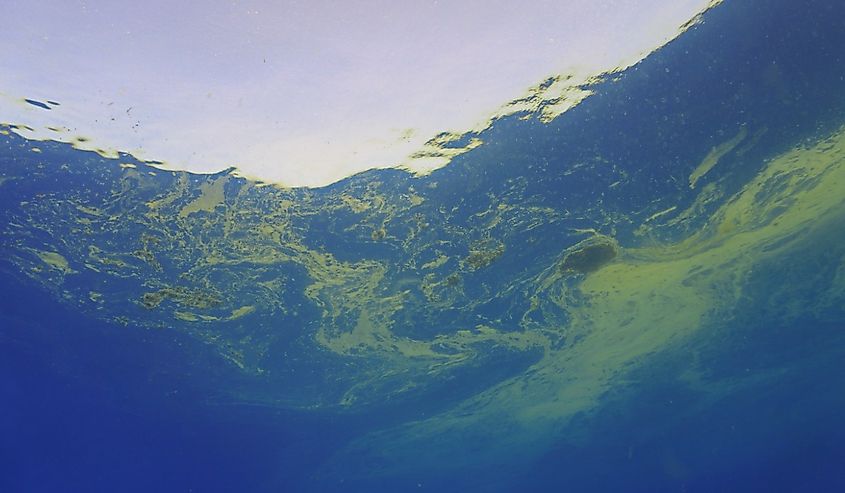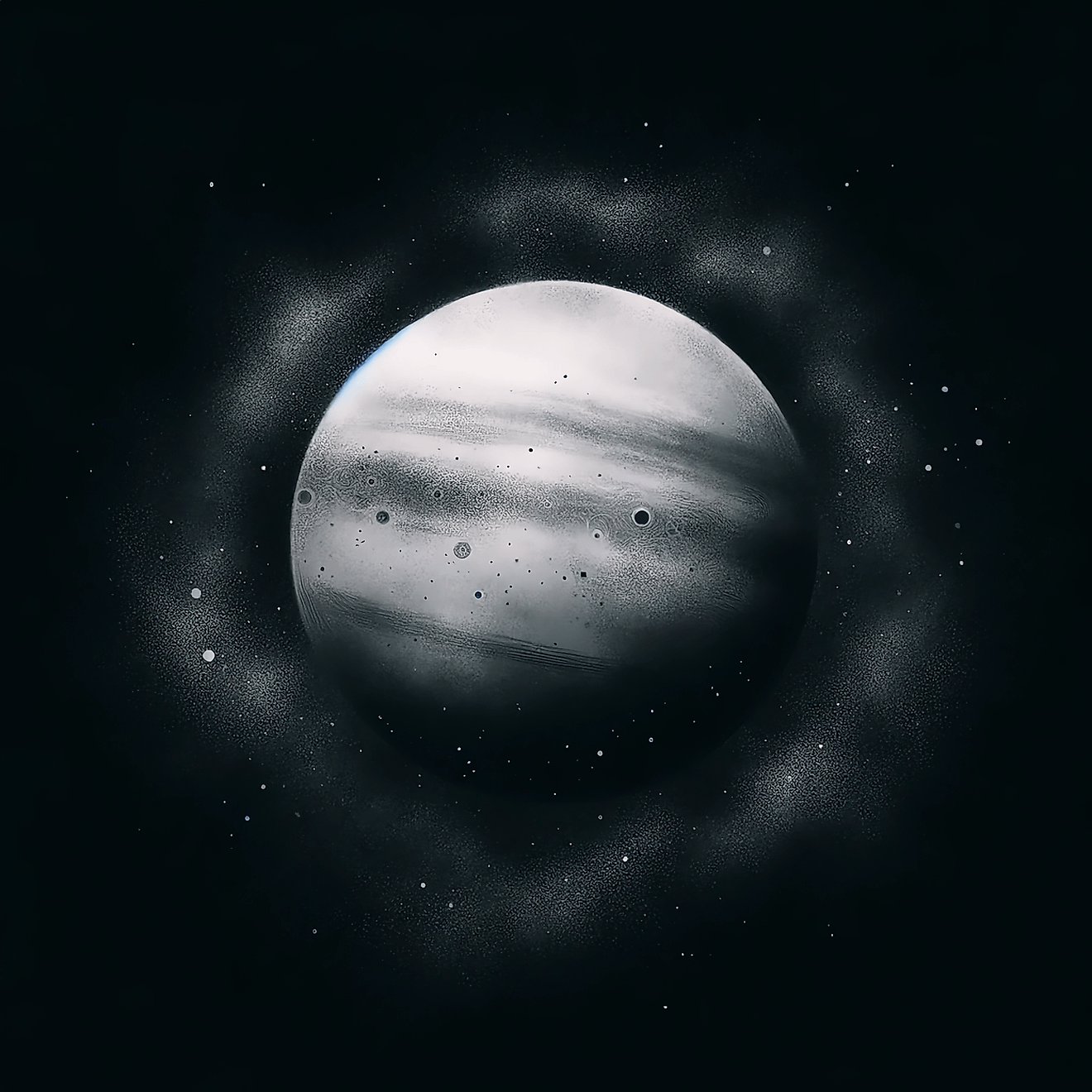
The Different Causes Behind Sky and Oceans' Shared Blue Color
Many creation myths feature two intertwined primordial entities: the endless expanse of the sky above and the fathomless depths of the ocean below. From the Greeks’ Oceanus and Uranus to the Polynesians’ Tangaroa and Ranginui, humanity's fascination with the cosmic chaos between these two realms is evident.
Scientifically, the Primordial Soup Hypothesis resonates with these concepts. It theorizes that, at the beginning of time, volatile geochemical reactions led to the abiotic emergence of bacteria. Earth's warm, wet environment provided suitable conditions for this process. In other words, our sky and oceans' composition and mode of action were essential to life materializing on Earth. Rightfully so, scientists have long been interested in studying the characteristics of the sky and oceans: what causes marine heatwaves? What is ocean ventilation? How does rainfall affect our oceans? And more popularly, out of all colors, why do the ocean and sky both appear blue, reminiscent of sadness, sapphires, and blueberries?
From Rayleigh Scattering to the physics of water's light absorption and scattering, scientists offer robust explanations for the blueness of our sky and oceans.
Spraying on a Blue Canvas

We would never perceive colors in the world without lights, such as from the sun, to illuminate objects. Sunlight is one of the many factors that create the blue-painted phenomenon of the sky. But sunlight, despite being called ultraviolet light or rays, is not totally blue or yellow.
Determined by Isaac Newton in the 1660s and later confirmed by astronomers, white light from the sun contains all colors in the spectrum. It is composed of different colors, which are then made of different wavelengths of light. Longer wavelengths of light are not as scattered as shorter wavelengths of light because the amount of refraction increases as the wavelength of light decreases. This means that shorter wavelengths of light (violet and blue) are slowed more and, therefore, experience more bending and scattering compared to the longer wavelengths (orange and red). It is these shorter, slower wavelengths of light that we commonly see in the sky.
Yet, it is not enough that the wavelengths of light are shorter or slower. We see objects because light hits those objects and bounces into our eyes, and the objects that sunlight constantly hits in the atmosphere are tiny molecules and atoms of carbon dioxide, oxygen, nitrogen, and argon, which scatter the shorter wavelengths of light. Blue and violet wavelengths are closer to the size of these atmospheric molecules, effectively scattering them more like sand through a sieve. This phenomenon, called Rayleigh Scattering after Lord Rayleigh (John William Strutt), who first discovered it, increases as the wavelength of light decreases, therefore rendering blue light more visible than red or orange.
Rayleigh Scattering and Why the Sky is Blue

However, Rayleigh Scattering does pose one conundrum: since violet wavelengths are technically shorter than blue wavelengths, why do we not see a violet sky and instead a blue one? In a word: eyes. According to a Big Think article on the subject, because human eyes have three types of cones for detecting color, along with the monochromatic rods, the signals from all four respond more strongly to blue, cyan, and green wavelengths of light than they do to violet. There is not enough violet light in the sun’s white light to overcome the powerful blue light our retinas deliver to the brain; hence, the sky is painted blue by our eyes.
There are exceptional moments when the sky is not blue: at noon, the sun appears white at its zenith, and subsequently, the whole sky is white. But this is because sunlight travels a shorter distance through the atmosphere to get to us—it is scattered very little, even the blue light, whereas it returns to blue when sunlight reaches air particles in a longer distance. However, if sunlight travels too far to reach us—for example, when the sun is low in the sky—we no longer see the blue light because it is too scattered away. According to Michael Kruger of the Department of Physics at the University of Missouri, "When the sun is setting, the light that reaches you has had to go through lots more atmosphere than when the sun is overhead; hence, the only color light that is not scattered away is the long wavelength light, the red."
As for skies on other planets, their primary color may differ from Earth's due to the atmosphere: whatever air particles, or lack thereof, are on those worlds will paint the sky a different dye.
The Vomiting Blue Maw

In the story of Jason and the Argonauts, the Greek heroes find themselves beset by the sea beast Charybdis. All teeth and mouth, it swallows seas whole and spits it all out in furious geysers. All the oceans of the Earth are notably similar to the voracious monster: they consume stuff first before spitting something back out. On a daily basis, they eat and vomit wavelengths of light.
Many presume that the oceans and seas reflect the blue color of the sky. This is not entirely accurate. Rather than purely reflect, those big blue monsters first absorb light, specifically red light, as Charles L. Braun and Sergei N. Smirnov explained in their article Why is Water Blue?, due to vibrational transitions of the molecules, then reflect the blue light from their absorption of other colors in the spectrum. This mechanism differs from Rayleigh Scattering. While the sky scatters white light into a diffusion of longer or shorter wavelengths, the oceans consume longer wavelengths and spit out shorter wavelengths.
In the McGill article entitled Why is the Sky Blue? Or Better Yet, Why is the Ocean Blue?, Ada McVean writes, "When light hits water, the water's molecules absorb some of the photons from the light. Everything absorbs at a different wavelength (Your green t-shirt absorbs red) and, as a result, reflects the remaining colors back at a viewer (that's why your t-shirt looks green)… The water molecules absorb all the red wavelengths from the light, making it reflect blue."
How Impurities in the Ocean Affect Its Color

Naturally, not all oceans and seas are the same color of blue, nor are they blue all the time. Biological agents like algae and phytoplankton absorb all colors except green (or red during Red Tides), while disturbed sediments like soil, rocks, clay, and other minerals reflect brown, milky, or other dirty colors while absorbing the rest. But depths also play a valuable role in the refraction of blue light. Since oceans and seas absorb infrared light and red visible light rather than scatter them as the sky does, the deeper one is from the sun, the more red, orange, yellow, and green wavelengths are taken away, leaving only blue light to be seen. Even blue wavelengths vanish once the depths are too deep for even light to refract through the unfathomable water. Because the global average albedo (reflectivity) of Earth is 0.30, that means 30% of the incident light gets reflected back into space, and most of that reflected light is the common blue aura so iconic and unique in our world.
As Above, so Below?
The ocean and sky could not be more different. Even the color they purportedly share—blue—is not a precise shade or hue. Gases comprise the atmosphere we breathe in, whereas different liquid substances constitute the vastness of the deep. While the phenomenon of Rayleigh Scattering can be observed in the light-blue and shorter wavelengths coloring the sky, the absorption of longer and redder wavelengths of big bodies of water like the oceans is reflected in a darker shade of blue. All these sensational and differential sights, however, are debatable without our eyes to collect the illuminated air and water for the brain to interpret as the color blue.
Yet despite the physical and natural dissimilarities, these two entwined bodies separated by the thin line of the horizon have been the bottomless sources of aspirational adventures throughout the culture. Humans have traveled across the blue waters in search of hope and ambition, and now humans journey beyond the blue air in the hopes of exploring the infinite oceans between worlds. How we continue to view the skies and oceans, be it in our world or others, is a matter of future perception.











